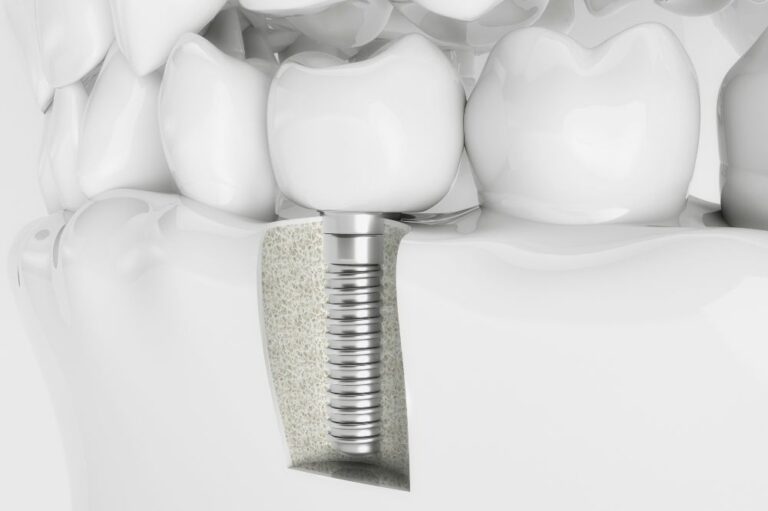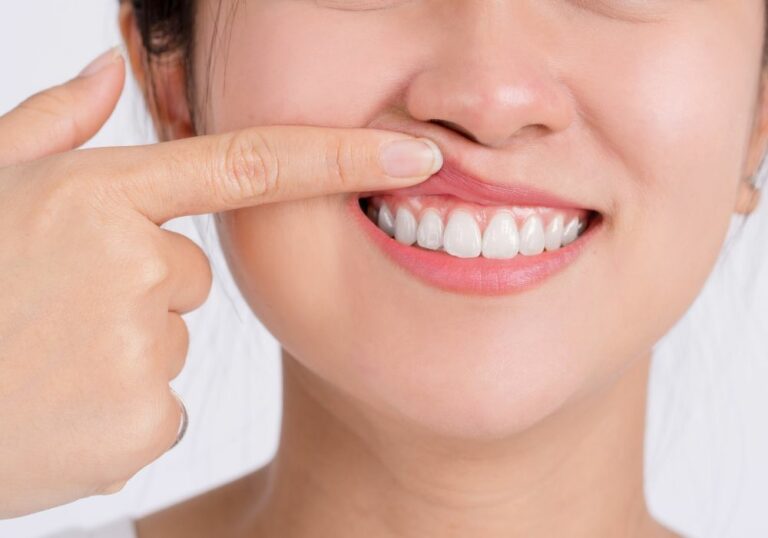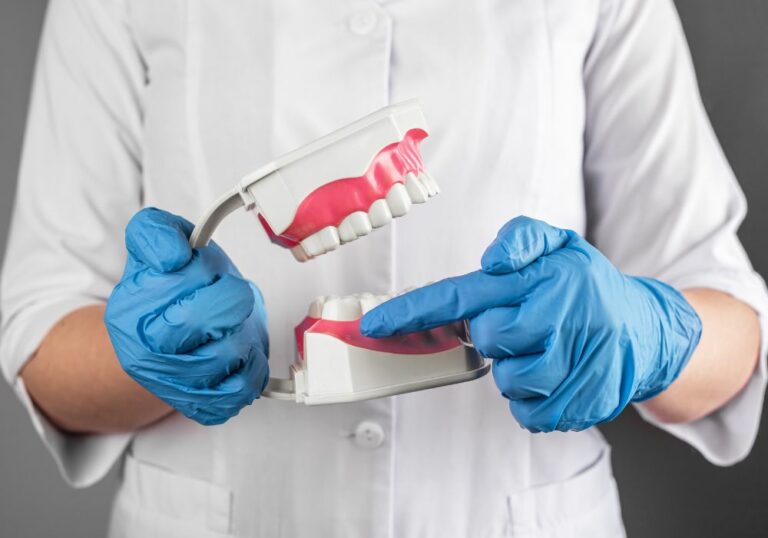Bone loss in the jaw, known as periodontal disease, is a common oral health condition that can potentially lead to tooth loss if left untreated. However, with early diagnosis and proper management, bone loss does not necessarily equate to losing teeth.
What causes bone loss in the jaw?

The jawbone surrounds and supports the teeth. It undergoes constant remodeling, which is a process of old bone tissue being removed and new bone forming to replace it. Bone loss occurs when this cycle becomes imbalanced, leading to more bone degradation than regeneration.
Several factors can trigger excess bone loss in the jaw:
- Gum disease (periodontitis): Bacterial infection and inflammation of the gums cause the destruction of connective tissues and bone surrounding the teeth. This is the most common cause of bone loss in adults.
- Injury: Any trauma to the teeth or jaw, such as an extraction, implant placement, or direct blow, can damage the bone in that area. Failing to replace missing teeth can also lead to localized bone loss over time.
- Cancer radiation: Radiation therapy targeting cancers of the head and neck region can damage bone cells and blood vessels, causing rapid bone loss.
- Poor nutrition: Deficiencies in calcium, vitamin D, vitamin C, and other nutrients essential for building and maintaining bone mass lead to reduced bone density and excessive bone loss, especially in children and the elderly.
- Medications: Certain drugs like steroids, antiseizure medications, immunosuppressants, and cancer treatment drugs are associated with decreased bone mineral density and increased risk of bone loss.
- Medical conditions: Diseases like osteoporosis, rheumatoid arthritis, hyperparathyroidism, and Paget’s disease negatively affect overall bone metabolism and may hasten bone loss.
- Lifestyle habits: Smoking can impair blood supply and healing, leading to periodontal disease and bone loss. Excess alcohol also irritates the gums.
- Hormonal changes: Estrogen deficiency in post-menopausal women causes rapid bone loss. Low testosterone in men is also a risk factor.
Stages and symptoms of bone loss
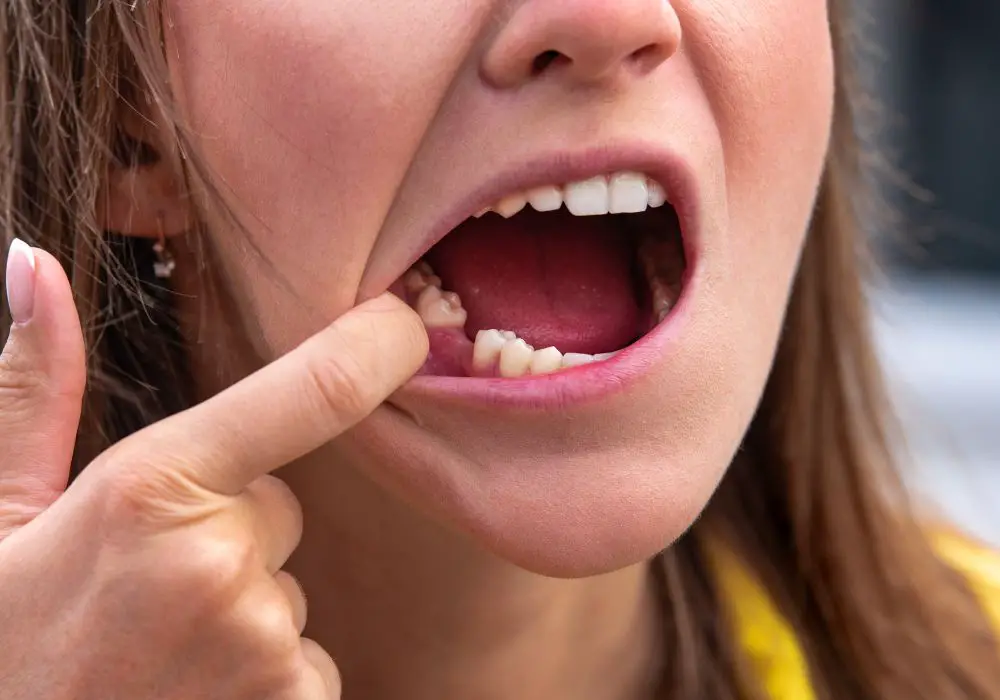
Bone loss in the jaw is often silent initially with no obvious symptoms. As it progresses, the signs and symptoms become more pronounced.
Early bone loss
- Gums bleed easily during brushing and flossing
- Gums appear swollen and reddish-purple in color
- Teeth feel slightly sensitive or loose
- Bad breath
Moderate bone loss
- Gums recede, exposing tooth roots
- Periodontal pockets form as space increases between teeth and gums
- Pus discharge from deep gum pockets
- Loose teeth that have shifted position
- Changes in the fit of partial dentures
Severe bone loss
- Teeth become very loose and can detach spontaneously
- Major changes in tooth alignment and bite relationship
- Uncomfortable dentures that do not fit properly
- Portions of the jawbone are visible where gums have receded
- Abscesses and pus around teeth
- Eventual tooth loss if left untreated
- Problems chewing, smiling, and speaking due to missing teeth
Risk factors for bone loss

A number of factors can increase one’s risk of developing progressive bone loss in the jaw:
- Poor oral hygiene: Inadequate brushing and flossing leads to plaque buildup around teeth. This irritates gums and triggers chronic inflammation, setting the stage for bone loss.
- Tobacco smoking/chewing: Chemicals in tobacco restrict blood flow, slow healing, and increase receptivity to infections. Smokers have a 3-5 times higher rate of periodontal disease.
- Diabetes: High blood sugar levels increase susceptibility to infections, gum inflammation, and impaired healing – all risk factors for bone loss.
- Medications: Drugs that cause dry mouth, those affecting the immune system, and those impacting hormone levels can affect bone density.
- Clenching/grinding: These put excessive biting forces on the teeth, which can destroy underlying bone and ligaments.
- Missing teeth: Gaps from lost teeth can cause the jawbone to weaken and deteriorate over time.
- Ill-fitting dentures/braces: Improper fit causes irritation and abnormal force distribution leading to bone loss.
- Genetic factors: Gene mutations affect the immune response and increase susceptibility to severe gum disease and bone loss.
- Stress: Chronic stress elevates cortisol and inflammation, which are linked to higher bone loss.
Is bone loss always irreversible?
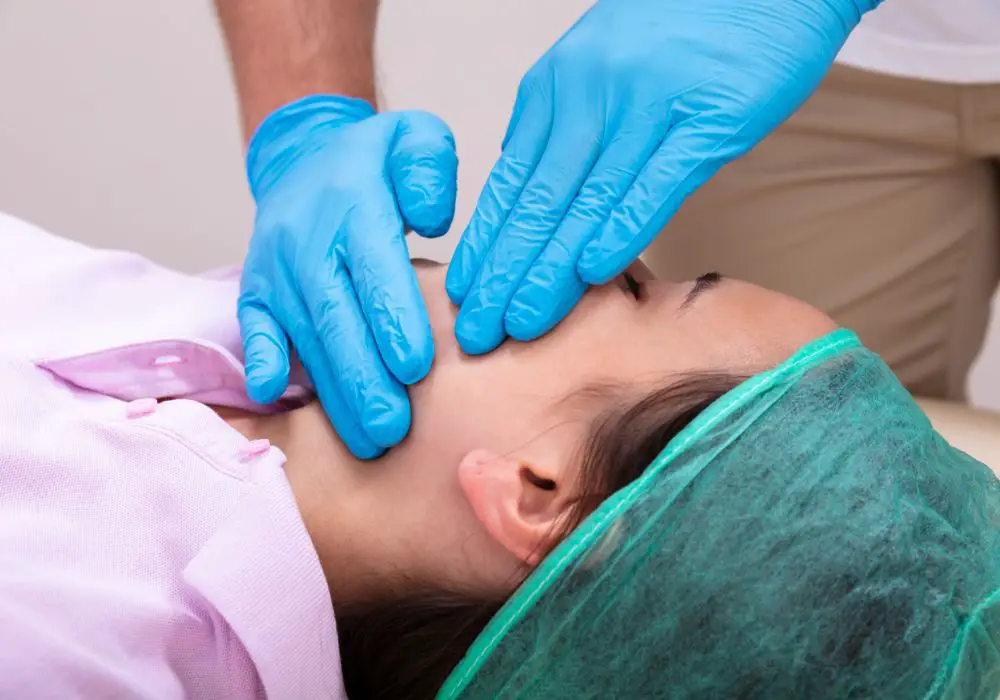
The early stages of bone loss are often reversible with prompt treatment. However, extensive bone loss leads to permanent structural changes in the jawbone. The key is early detection and intervention before substantial damage occurs.
Here is an overview of the progression of bone loss and prognosis:
Stage 1 (gingivitis): Inflamed gums – Reversible with improved hygiene and professional cleanings
Stage 2 (mild periodontitis): Up to 30% bone loss – Reversible with deep cleanings and minor grafts
Stage 3 (moderate periodontitis): 30-50% bone loss – Partially reversible with grafting
Stage 4 (severe periodontitis): Over 50% bone loss – Irreversible and permanent without extraction
The takeaway is, catching bone loss early when only mild to moderate loss has occurred, gives the best chance of regenerating bone through nonsurgical therapy. Treating advanced disease may help prevent further progression but cannot fully restore lost bone.
Does bone loss always lead to tooth loss?
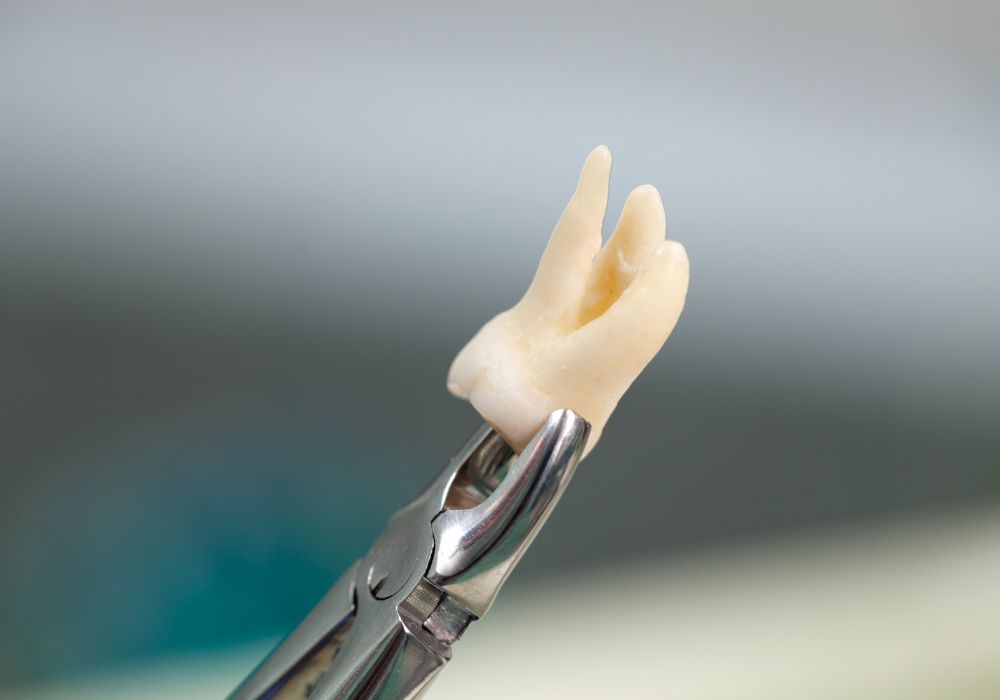
Although bone loss significantly raises the risk of eventual tooth loss, it does not seal the fate of teeth if caught and managed early. Here is a closer look at the relationship:
- Jawbone supports teeth by holding them in place. As more bone tissue gets destroyed, teeth become loose and unstable.
- In mild (up to 30%) bone loss, teeth can be saved through prompt treatment like deep cleanings and minor grafts as needed.
- Moderate bone loss (30-50%) also has a good prognosis with more intensive nonsurgical and surgical therapy.
- Severe bone loss (over 50%) often leads to eventual tooth loss, either due to detachment from minimal support or extractions if teeth cannot be salvaged.
- Therefore, while early to moderate bone loss can be successfully treated to save teeth, severe bone destruction usually results in tooth loss. The extent of damage determines prognosis.
- Catching the problem early through regular dental exams allows steps to be taken to prevent extensive irreversible bone loss and tooth detachment or extraction.
In summary, bone loss significantly raises the risk of tooth loss but does not mean teeth are doomed if managed early. Timely diagnosis and treatment are key to saving teeth and jawbone.
How is bone loss diagnosed?

Detecting bone loss early is critical for successful treatment and prevention of permanent damage. Dentists use various methods to evaluate bone levels:
Dental examinations
- Visual inspection: Checks for gum inflammation, recession, loose teeth, changes in fit of dentures, etc.
- Periodontal probing: Measures pocket depth around teeth. Deeper pockets signal detachment of gums from underlying bone.
- Mobility testing: Wiggling teeth with instruments detects looseness indicating bone loss and reduced support.
Dental imaging
- Bitewing x-rays: Give clear images of bone levels between teeth. Sequential films allow comparison over time.
- Panoramic x-rays: Show overall jawbone density around all teeth in a single scan.
- Periapical x-rays: Focused view helps measure small areas of bone loss around individual teeth.
- Cone beam CT: Provides 3D views of precisely located areas of bone loss.
Specialized tests
- Microbiological tests: Identify specific bacteria inhabiting gum pockets that are causing bone destruction. Targeted antibiotic therapy can then be planned.
- Genetic tests: Assess genetic risk factors like interleukin-1 polymorphisms associated with increased gum disease severity.
- Biopsies: Involve sampling gum tissue and bone to examine directly under a microscope and confirm periodontitis.
Tracking measurements over time determines the rate of bone loss, which guides treatment intensity and periodic reevaluation.
What are the treatment options for bone loss?
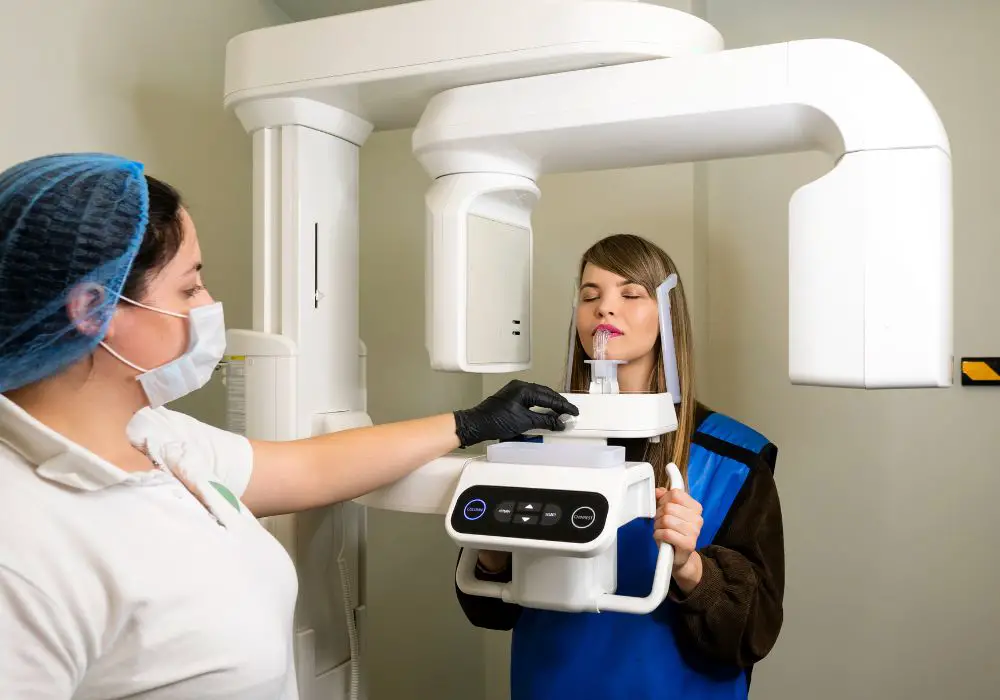
Treatment for bone loss aims to eliminate active infection, regenerate lost bone where possible, and prevent further damage. Options range from nonsurgical therapy for mild cases to surgery for moderate to advanced bone loss.
Nonsurgical treatments
- Professional deep cleanings below the gumline
- Prescription antimicrobial mouth rinses (chlorhexidine)
- Antibiotics to treat active infections
- Flap surgery to clean root surfaces
- Bone grafting materials to fill defects and stimulate regrowth
Surgical treatments
- Open flap debridement and bone graft placement
- Bone regenerative proteins (Emdogain)
- Soft tissue grafts to protect bone and root surfaces
- Guided tissue regeneration with resorbable membranes
- Bone growth factors like rhPDGF to stimulate cells
- Dental implants to preserve bone in areas of tooth loss
- Ridge augmentation if the bone contour is altered
The specific techniques are tailored based on the individual case. Mild bone loss may be treated with deep cleanings and antibiotics. More extensive damage often requires surgical intervention to try to regrow lost bone.
Can bone loss progression be prevented?
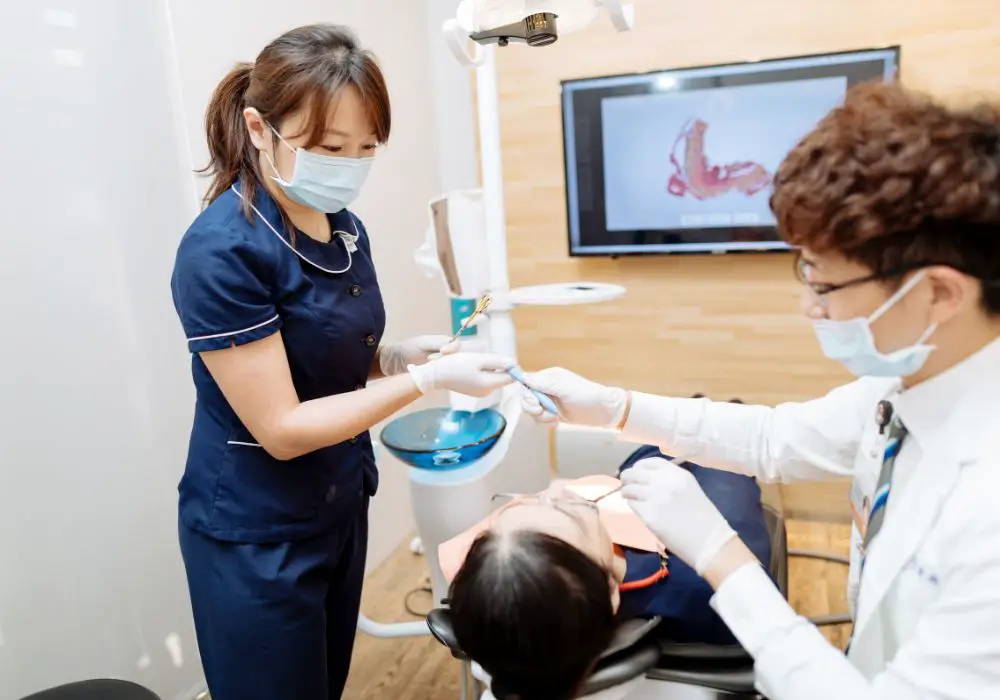
Yes, practicing good oral hygiene and getting regular professional care are key to preventing the development of substantial bone loss and its complications. Prevention tips include:
- Brushing twice and flossing daily
- Using an antibacterial mouthwash to reduce bacteria
- Replacing worn toothbrush every 3-4 months
- Having dental cleanings and exams every 6 months
- Quitting smoking and limiting alcohol
- Eating a balanced diet high in calcium and vitamins D and K
- Taking bone-strengthening supplements if deficient or high-risk
- Properly caring for dentures to avoid pressure points
- Using bite guards if you clench or grind teeth
- Getting prompt evaluation and treatment of dental injuries
Making oral health a priority allows early screening and prevention of progressive bone damage due to periodontal disease. With diligent daily care and regular dental visits, bone loss risk is greatly lowered.
FAQ about bone loss in the jaw
Here are answers to some frequently asked questions about bone loss:
1. How can you tell if you have bone loss?
In early stages, bone loss shows no visible symptoms. As it progresses, signs like gum recession, loose teeth, ill-fitting dentures, and eventually tooth loss become apparent. Dental x-rays detect bone levels long before obvious symptoms arise.
2. What does severe bone loss feel like?
With substantial bone loss, teeth become very loose and unstable, sometimes falling out with little pressure. Bite alignment changes as teeth shift, and dentures are painful due to lack of support. Exposed portions of bony jaw ridges may be visible.
3. Can smoking cause bone loss in the jaw?
Yes, smoking is a major risk factor for gum disease and bone loss. Tobacco smoke irritates gums, slows healing, and increases susceptibility to bacterial infection – all triggers for periodontitis and bone destruction.
4. Does osteoporosis lead to bone loss in the mouth?
While osteoporosis affects the entire skeleton, some research shows an association between osteoporosis and periodontitis. Estrogen deficiency in post-menopausal women is a common risk factor for both conditions. Controlling both diseases is important.
5. Can you reverse bone loss naturally?
In the early stages, bone loss may be reversed through plaque removal, improved oral hygiene, diet changes, and supplements. However, moderate to advanced loss requires professional surgical treatment for true regeneration of destroyed bone.
Conclusion
In summary, bone loss in the jaws is a condition that usually develops from periodontal disease damage. If caught early, bone loss can be treated and reversed in many cases through nonsurgical therapy and diligent oral hygiene. However, extensive untreated bone loss eventually leads to permanent changes, unstable teeth, and tooth loss. Detecting and treating bone loss in its early stages via regular dental exams and x-rays can help prevent worst-case scenarios. Controlling risk factors is also key. While bone loss heightens risk for eventual tooth loss, timely intervention means it does not have to be inevitable if addressed properly.

